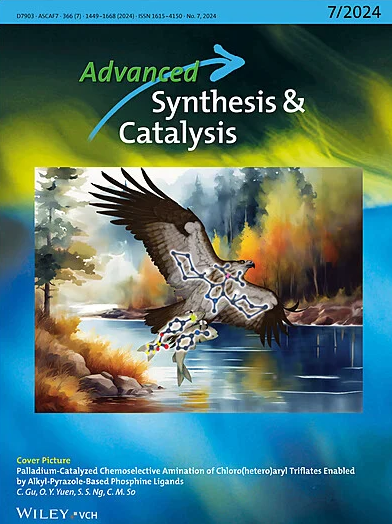Titanium‐Free N‐Sulfinyl Ketimine Formation by Transimination
IF 4.4
2区 化学
Q2 CHEMISTRY, APPLIED
引用次数: 0
Abstract
Reaction of sulfinamides with in situ generated N‐trifluoromethanesulfonyl ketimines occurs rapidly at room temperature in the presence of KOt‐Bu. The precursor N‐H imines are accessible by organolithium addition to nitriles or condensation of HMDS with ketones. This protocol avoids work‐up and reactor cleaning challenges encountered in the traditional Ti(OEt)4 mediated condensation approach. The reaction works well for extremely hindered substrates, some of which were inaccessible with the Ti(OEt)4 procedure.求助全文
约1分钟内获得全文
求助全文
来源期刊

Advanced Synthesis & Catalysis
化学-应用化学
CiteScore
9.40
自引率
7.40%
发文量
447
审稿时长
1.8 months
期刊介绍:
Advanced Synthesis & Catalysis (ASC) is the leading primary journal in organic, organometallic, and applied chemistry.
The high impact of ASC can be attributed to the unique focus of the journal, which publishes exciting new results from academic and industrial labs on efficient, practical, and environmentally friendly organic synthesis. While homogeneous, heterogeneous, organic, and enzyme catalysis are key technologies to achieve green synthesis, significant contributions to the same goal by synthesis design, reaction techniques, flow chemistry, and continuous processing, multiphase catalysis, green solvents, catalyst immobilization, and recycling, separation science, and process development are also featured in ASC. The Aims and Scope can be found in the Notice to Authors or on the first page of the table of contents in every issue.
 求助内容:
求助内容: 应助结果提醒方式:
应助结果提醒方式:


